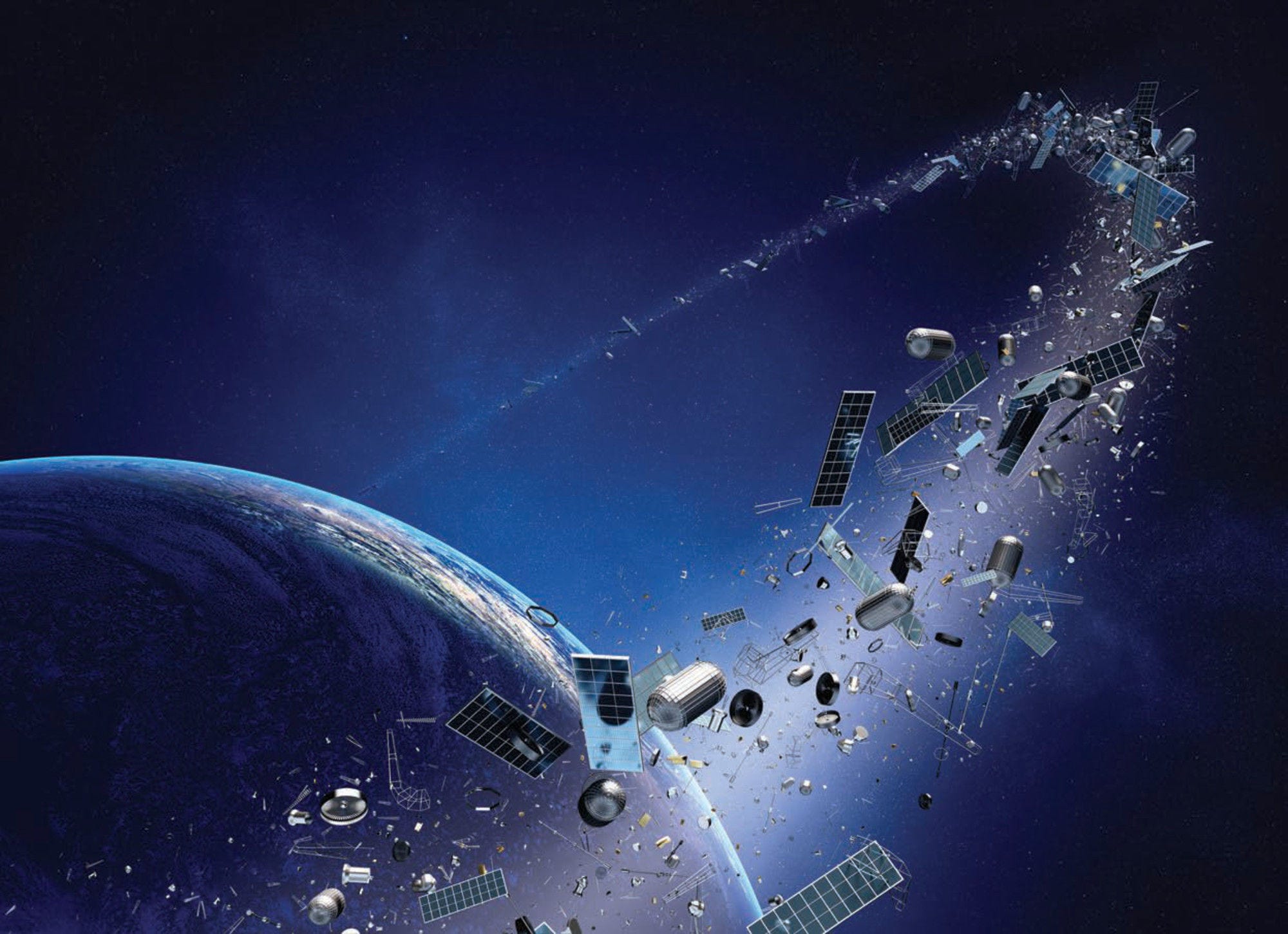The space economy is expanding and becoming increasingly global, driven by the development of ever-more governmental space programmes around the world, the multiplication of commercial actors in value chains, durable digitalisation trends, and new space systems coming of age. This report describes these emerging trends using new and internationally comparable data and indicators. It highlights the growing importance of space activities for the economy, for developing country strategies (based on original official development assistance statistics), for the pursuit of knowledge and scientific discoveries, and for society in general. To get the most out of space investments and promote sustained socio-economic growth, this report provides some recommendations to countries in building up their statistical evidence on space actors and activities.
The Space Economy in Figures

Abstract
Executive Summary
Space activities are expanding globally, with a record number of countries and commercial firms investing in space programmes. Ever more down-to-earth activities are derived from satellite signals and data, contributing to new economic activities often far removed from initial investments in space infrastructure. Digitalisation is transforming space manufacturing activities, downstream space applications and even space exploration.
This OECD report The Space Economy in Figures: How Space Contributes to the Global Economy documents these emerging trends using original indicators, highlighting the growing importance of space activities for the economy, social wellbeing and science. It further offers lessons learned to policymakers on fostering socio-economic impacts.
The transformation of the space sector
Never before has there been so much interest in the space sector, with satellites in orbit registered in over 80 countries and ever growing public and private investments.
Public space budgets reached an estimated USD 75 billion in 2017 (a figure expected to grow further in 2018) – their largest amount since the Apollo era in the 1960s. The United States has the highest budget in absolute terms (accounting for more than half of the total), followed by The People’s Republic of China (hereafter “China”), Japan and France.
Promising innovations and new space technology systems are coming of age, attracting much attention and increased public and private capital – small and micro satellites, mega-constellations of hundreds of satellites, small launchers, broadband and internet-of-things from space, commercial human spaceflight, to name a few. In this context, the space economy is projected to grow, although probably at a slower pace than recent years, as markets expand and activities become more interconnected with terrestrial systems and consumer products.
Start-ups in all segments of the space sector continue to emerge with over 500 small companies, particularly in the United States, but also in Europe, Japan, China and India, created in the past four years. Some of these start-ups aim to provide new launch capabilities, innovative Internet-of-Things services via small satellites, or new forms of data analytics. Although many still need to bring their products to market, one of their strongest impacts so far has been to spur innovation and encourage larger aerospace incumbents to begin to adapt their business practices to the new environment.
Digitalisation is increasingly impacting the entire space sector, from incumbents to newcomers. Science, research and development (R&D), manufacturing and production processes are all being disrupted. In industry, digitalisation is creating new opportunities, with the introduction of lean manufacturing processes, vertical integration of end-to-end products and services (e.g. from satellites all the way to ground terminals), as well as with the first assembly lines for the mass production of small satellites. The development of 3-D printed components for satellites and rockets are becoming the norm for both large and small aerospace manufacturers. Cost- and time efficiencies are expected to sift into the entire space sector’s value chains.
Further shake-ups expected in the space sector
In view of accelerated digitalisation trends affecting all parts of the economy, the structure of the space industry itself seems to be on the verge of a shake-up, with new challenges to overcome:
Changes in customers’ appetites for digital products, from satellite television to geospatial services, could have strong impacts on many existing commercial space service providers if they position themselves correctly. For example, the business models of many of the planned constellations of one hundred plus satellites – key to the space sector’s ability to realise the benefits of the continued digitalisation of the rest of the economy – are still to be proven. Despite this launches for at least twenty such constellations are planned in the next six years.
Stronger competition across the sector may lead to increased concentration and/or multiple exits in certain segments of the value chain, creating both winners and losers. This applies to commercial markets already at the centre of major disruptions such as satellite communications, but also the much larger and traditionally captive institutional space markets in North America, Europe, and Asia.
Competition from terrestrial providers of services in space downstream markets is becoming more tangible (e.g. fibre and 5G mobile systems with spectrum issues).
Finally, one crucial unknown in the near future, for all space activities, is linked to the accumulation of debris in orbit, representing millions of objects, where a single accident could have catastrophic cascading consequences for the entire space economy.
Policy actions for a globalised space sector
As the space sector is transformed in the face of continued digitalisation, policymakers play an important role in enabling the transition for existing firms while at the same time fostering innovation and entrepreneurship. In order to reap the full benefits of existing and future space activities and to ensure sustainable and equitable growth, policy actions in four different areas are recommended:
Increase government use of commercial services, via procurement and co-funding mechanisms. Institutional space budgets still represent a key driver for commercial space activities, with public administrations already acting as funders or anchor tenants of many commercial space services. As capabilities from the private sector grow, government can make more extensive use of commercial space services for increasingly sophisticated tasks.
Map national space economies in cooperation with national statistical offices, industry associations and/or private contractors. All countries and firms have the opportunity to participate and benefit from the space sector’s global value chains. Governments that fund space programmes should better track who is doing what in the space industry and beyond, via regular industry surveys and analysis of existing administrative data. This includes mapping the many actors along the value chains of their national space economies.
Further address human resources needs of the space sector, particularly in view of current digitalisation trends that will increase competition for talent, and the still significant gender gap in space-related higher education and employment. Programmes to promote fair participation in the space sector would benefit from thorough maps of gender employment, in order to track, evaluate and compare different initiatives.
Identify solutions to mitigate space debris, through international cooperation, regulation and technology development, especially as the next three years could see a tripling in the number of satellites in orbit.
Key facts and figures on the space sector
Public space budget have reached their largest amounts since the 1960s and the Apollo era, at an estimated USD 75 billion in 2017, with the United States accounting for more than half of the total budget, followed by China, Japan and France.
Returns from investments in space programmes take many shapes. In the case of space applications, such as telecommunications and earth observation, top benefits include efficiency gains, cost savings and cost avoidances. Many of these occur in the following domains of application: government services, defence, transport, weather, environmental management and climate change monitoring.
In view of their positive impacts in developing countries, space applications have become increasingly part of official development assistance (ODA) projects. Top space-related ODA contributors include France, the United States, Japan, The Netherlands, Norway, the United Kingdom, and Canada.
In Europe and North America, women account for slightly more than 20% of space manufacturing employment and some 10-15% of aerospace engineers. The share of women graduates in aerospace engineering remains low in many OECD countries, despite government and private sector efforts.
A record number of space exploration missions are planned in the next five years: more than 15 missions to the Moon by eight different space agencies (with even commercial missions), at least six missions to Mars, and two to reach asteroids.
2018 saw the highest number of orbital launches conducted since 2000 (114 launches). More than 60% of which took place in either the United States or China. With 21 rockets launched in 2018, SpaceX broke the record of annual launches conducted by one company.
The past five years have seen exponential growth in the number of launches of very small satellites, with almost 900 satellites launched in the 2014-18 period.
By 2020, four global navigation satellite systems (GNSS) should be fully operational (US, Russia, Europe, China) and three regional ones are in the process of being rolled out (India, Japan, South Korea). Already more than 60% of devices around the world can receive two or more GNSS signals, and almost all new smartphones are equipped with multi-signal chipsets and receive positioning, navigation and timing information.
Satellite broadband grew steadily over the last decade. The total number of subscriptions rose from around 1.2 million in 2008 to above 5.2 million in 2017. Developers of several very large satellites constellations aim to provide commercial broadband services to the entire world by 2023-24.
With cable TV still the leading technology for television broadcasting globally, and new mobile television services being rolled out, around five in every 100 inhabitants worldwide have a satellite TV subscription in 2017, rising from 1.5 in 2008 (with a majority in OECD countries).
More than 50% of the essential climate variables rely on satellite data. Earth observation and weather satellites contribute information to manage both land and ocean activities, and they provide crucial data for weather forecast models as well.
At least seven organisations are investing in commercial suborbital and orbital space tourism activities, to start in the next five years. Two companies could be offering their first suborbital activities as early as 2019-20 (Virgin Galactic, Blue Origin).
Since the start of the space age, more than 5 200 rockets have been launched and 7 500 satellites placed in orbit. Around 1 200 satellites are currently operational today flying in the midst of debris, representing around 29 000 space objects measuring more than 10 centimetres, with an estimated 167 million objects under 10 centimetres.







